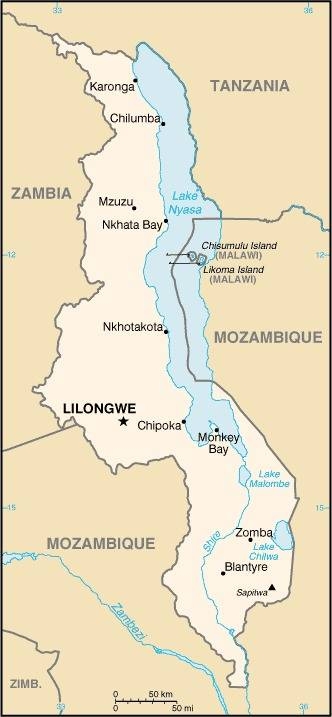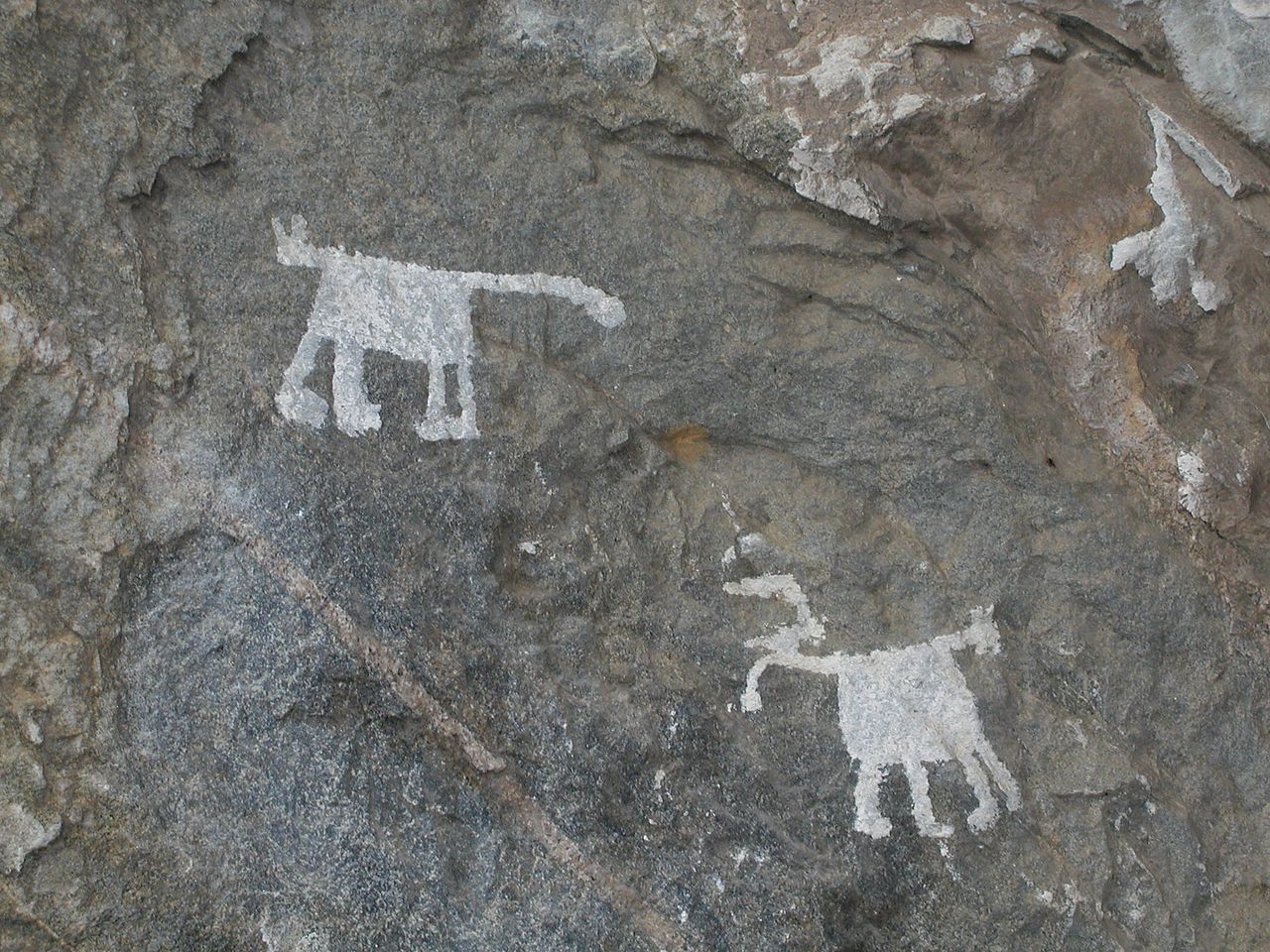207 Malawi

Three equal horizontal bands of black (top), red, and green with a radiant, rising, red sun centered on the black band. Black represents the native peoples, red the blood shed in their struggle for freedom, and green the color of nature. The rising sun represents the hope of freedom for the continent of Africa.
Flag courtesy of the CIA World Factbook

Map courtesy of the CIA World Factbook

Government
According to Britannica, Malawi is a multiparty republic. Malawi’s original constitution of 1966 was replaced with a provisional constitution in 1994, which was officially promulgated in 1995 and has since been amended. It provides for a president, who is limited to serving no more than two five-year terms, and up to two vice presidents, all of whom are elected by universal suffrage. The president serves as head of state and government. The cabinet is appointed by the president. The legislature, the National Assembly, is unicameral; its members also are elected by universal suffrage and serve five-year terms. The 1995 constitution also provided for the creation of an upper legislative chamber, but it was not established by the target completion date in 1999; a proposal to cancel plans for the creation of such a chamber was passed by the National Assembly in 2001.
The country is divided into a number of administrative subdivisions, district, city, municipality, and town, that are governed by assemblies. Each assembly has a political arm and a technical arm. Efforts have been undertaken to strengthen local governments by giving them more financial autonomy from the central government.
The judiciary is based upon the system prevailing in the British colonial era and consists of a Supreme Court of Appeal, a High Court, and subordinate courts. The Supreme Court of Appeal, made up of a chief justice and a minimum of three justices of appeal, is the highest court in the land and hears appeals from the High Court. The High Court has judicial authority over all civil and criminal cases. The traditional court system, which was introduced in 1964, was terminated by the 1995 constitution; made up of specially chosen judges, the traditional courts were often used by the government of Pres. Hastings Kamuzu Banda (1963–94) to obtain favorable sentences against political opponents. The judiciary is based in Blantyre.
Initially, most of the country’s lawyers were trained in the United Kingdom, but since the early 1970s the overwhelming majority have been graduates of the law school at Chancellor College, at the University of Malawi.
Malawi Government
Malawi Department of Civil Aviation
Airspace
SkyVector – Google Maps – ADS-B Exchange
ICAO countries publish an Aeronautical Information Publication (AIP). This document is divided into three parts: General (GEN), En Route (ENR) and Aerodromes (AD). ENR 1.4 details the types of airspace classes they chose to adopt from classes A through G.
Malawi AIP
Drone Regulations
Advanced Air Mobility (AAM) Regulations & Policies
None found by the author.
However, should you, the reader, happen to stumble across something to the contrary, please email the author at FISHE5CA@erau.edu and you may be mentioned in the ACKNOWLEDGEMENTS section of this book by way of thanks for contributing to this free eBook!
Advanced Air Mobility (AAM) News
2025
Video courtesy of Advanced Air Mobility Institute from the January 2025 Global AAM Forum. Complete session for Day 2 of this Forum is available on the Advanced Air Mobility Institute YouTube Channel
Short Essay Questions
Scenario-Based Question
You have been hired by a Drone Startup Company. Your boss has immediately assigned this job to you.
They need you to prepare a one-page memo detailing the legalities of using a drone to film in Malawi.
They need you to mention any national laws and local ordinances.
They specifically want to know what airspace (insert pictures) you will be operating in and whether or not you need an airspace authorization.
Does it matter whether or not you are a citizen of the country?
Lastly, there is a bonus for you if, as you scroll through this chapter, you find any typos or broken links!
Short Essay Questions
- What are the drone categories?
- How is registration addressed?
- How is remote ID addressed?
- What are the model aircraft rules?
- What are the commercial drone rules?
- Are there waivers or exemptions to the rules? If so, for what?
- Would you share a link to an interactive airspace map?
- How is BVLOS addressed?
- How can you fly drones at night?
- How can you fly drones over people?
- Where do you find drone NOTAMs?
- What are the rules for drone maintenance?
- What are the rules for an SMS program?
- What are some unique rules not mentioned above?
- What are the C-UAS rules?
- What are the AAM rules?

